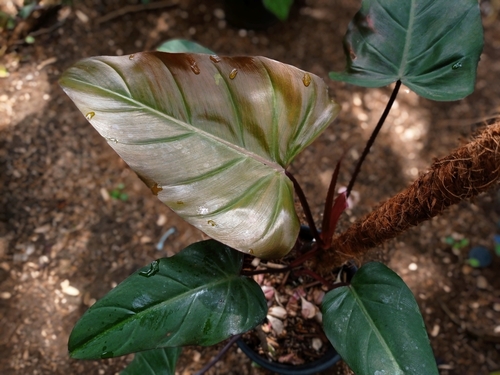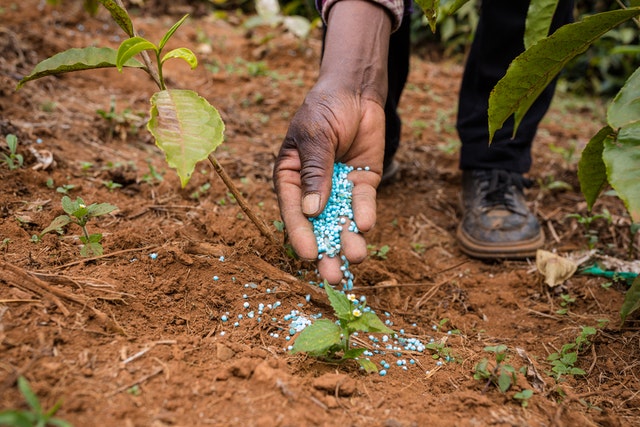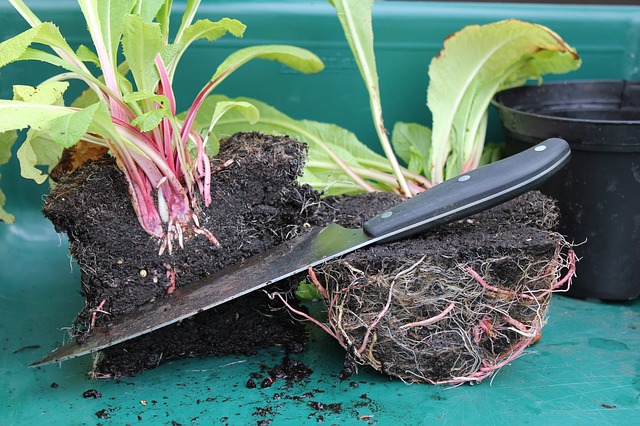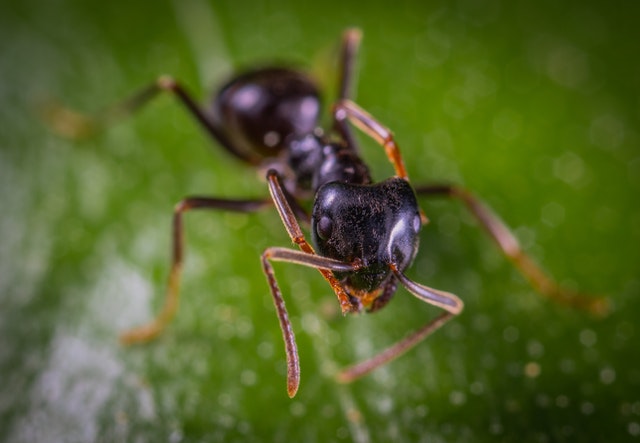Have you heard of the Dark Lord plant? This might have caught your attention because of its name. But, what exactly is this plant anyway? With its mysterious name, the Dark Lord plant has intrigued many and this article will provide an in-depth look into its origin, characteristics, and uses. Find out here.
What is a Dark Lord Plant?
The Dark Lord Plant is also known as Dark Knight Philodendron, Philodendron Dark Lord, and Pink Dark Lord Philodendron. It is an Imperial Red Philodendron Erubescens variety and is part of the Araceae plant family which has over 3,750 species.
This is a giant plant that’s loved by tropical plant collectors. It is popular for its unique foliage and long, arrow-shaped leaves that have cherry red undersides.
Origin and Classifications of a Dark Lord Plant
The Dark Lord plant is originally from Colombia and Panama. However, these can also be occasionally found in some parts of the Philippines, Seychelles, and Africa.
Over the past decades, the Dark Lord plant was not really popular. However, because of the pandemic, a lot of people started taking up plants and gardening as hobbies.
As a result, photos of the Dark Lord Plant were circulated on Instagram. It then gathered a lot of attention because of its unique look and features. The most popular variety of the Dark Lord is the Philodendron erubescens imperial red.
Features of a Dark Lord Plant

One of the reasons why the Dark Lord Plant has recently gained a lot of popularity is because of its unique features.
1. Height
The Dark Lord Plant is considered to be a giant plant. It can grow up to 3 to 6 feet tall. Since it’s a climbing plant, it’s highly recommended that you use coco coir or moss to give it stability while growing.
Dark Lord plants that have stakes and poles for support tend to grow taller than those that don’t. It’s because there’s not much weight putting pressure on the stems.
2. Flowers & Leaves
The most distinct characteristic of the Dark Lord Plant is its arrow-shaped long leaves. These leaves have purple cast edges and have a glossy sheen.
The Dark Lord Plant’s leaves usually start off as orange when they unravel. The color of the leaf will eventually turn red then dark green with its underside developing a deep maroon color.
3. Stem
The Dark Lord Plant does not have a thick stem which is why its big leaves appear to be cascading down. This is also the reason why it’s a good idea to provide support to the plant to let it grow taller and climb. The Dark Lord Plant leaves can be too heavy to support the big arrow-shaped leaves.
Basic Care of Dark Lord Plant
Although the Dark Lord Plat is not a high-maintenance plant, it has a few care requirements to keep it thriving. These requirements include:
1. Size & Growth
A mature Dark Lord Plant can grow up to 3 to 4 feet wide and 6 free tall. These are considered giants and they’ll take up a lot of space in your garden or greenhouse.
The stems of the Dark Lord Plant can grow between 1 to 3 inches thick. The thick stem size is expected given that the big arrow-shaped leaves dangle freely from the stem.
2. Light Requirements

Dark Lord Plants do best in locations that have plenty of bright sunlight. Preferably, you should put it somewhere with a minimum light reading of 200 FC. For best results, it should be placed in an area with a light reading between the range of 400 to 800 FC.
However, do not put it somewhere with direct sunlight because it might cause the leaves to be burned.
3. Water Requirements
You should gradually water the Dark Lord Plant until the water reaches the drainage holes, the same way you would water other types of plants. Watering your plants allows the roots to have the moisture it needs to grow. At the same time, it lets air into the root system which prevents root rot.
Instead of scheduling how many times you’ll water your Dark Lord Plant, you should schedule for checks instead. These checking schedules will allow you to determine if it’s time to water your plant and how much water it needs.
4. Soil Requirements
A Dark Lord Plant requires an organic soil mix that has vermiculite, perlite, and coco coir. This makes the soil fast draining and rich.
It’s highly discouraged for you to use sandy soil with this plant. Although the Dark Lord Plant requires a well-draining soil mix, a sandy soil mix will drain out the water too fast, preventing the Dark Lord Plant root from being able to get enough water.
5. Sunlight Requirements
The Dark Lord Plant thrives in places with lots of sunlight. However, avoid putting it under the dark sunlight because the leaves will burn and wilt. If you have no other choice but put it under direct sunlight, it’s highly recommended that you use a shade cloth that can minimize 20% to 40% of the sunlight.
6. Temperature & Humidity Requirements
The Dark Lord Plant thrives in temperatures between 70 to 85 Fahrenheit. It does not do well in colder temperatures.
If you live somewhere during the winter season and you have a Dark Lord Plant, it’s highly recommended that you transfer it to a warmer spot before it gets frosty because it can cause the leaves to wilt and prevent the plant from growing to its full potential.
Although it does fine in a warmer temperature setting, you’ll notice that its leaves will change to a darker shade of maroon. However, if it is exposed to temperatures above 85 degrees Fahrenheit for an extended period, there’s a high chance that the leaves will turn pale.
7. Drought & Disease Resistance
The Dark Lord Plant is generally a no-fuss plant. It does not immediately die if it doesn’t get enough water but the appearance of the plant will significantly change.
In terms of disease resistance, the Dark Lord Plant is not susceptible to any serious problem except for the Erwinia Blight Disease. It can also be attacked by bugs and pests but if these problems are addressed immediately, they won’t have lasting effects on the plant.
8. Toxicity
The Dark Lord Plant is toxic to some extent. It can cause negative side effects in cats, dogs, and even young children when it is ingested. The reason behind this is that the Dark Lord Plant has small oxalate crystals that are toxic when eaten.
9. Fertilizing

There are plenty of options for fertilizers that work for the Dark Lord Plant. However, the most recommended option is using a complete liquid fertilizer that contains phosphorus, potassium, and nitrogen.
The phosphorus and potassium in the NPK fertilizer will enable the stems and roots to grow well. Meanwhile, the nitrogen will stimulate leaf growth.
10. Potting & Repotting
The pot and container where you’ll put the Dark Lord Plant must be deep and have enough space for the roots to grow. The recommended pot size for younger Dark Lord Plat must be around 8 to 10 inches deep.
11. Pruning Requirements
Pruning the Dark Lord Plant will make it look more aesthetic because this is all about giving the plant an attractive shape. This plant in particular does not require regular pruning.
However, if you notice leaves that are starting to turn brown or yellow, have signs of infestation or are dead, then it’s best to remove them immediately.
How to Propagate a Dark Lord Plant?
The quickest way to propagate the Dark Lord Plant is to cut off a stem from a matured plant and then plant it into an organic potting mix.
These are the steps on how to successfully propagate a Dark Lord Plant:
1. Prepare the Soil
When propagating the Dark Lord Plant, you’ll need the right soil mix. The ideal soil mix for this plant must have worm castings, perlite, and moist coco coir.
2. Look for the Right Stem

Take a healthy stem from your matured Dark Lord Plant. Choose the stem that has at least 1 note with aerial roots. Cut the stem below the node.
3. Dip the Stem in a Rooting Hormone
Make a rooting hormone solution and dip the stem that you cut from the previous step into it. A rooting hormone powder will also work.
4. Plant
Plant the stem you cut into the soil mix that you prepared. Use a pot that has space that enables the plant root to grow later on. Ensure that the aerial roots are buried 2 to 3 inches deep into the soil.
5. Water
The last step to propagating the Dark Lord is for you to water the stem. After that, transfer it to an area with ample shaded sunlight.
The roots will develop in 3 to 6 weeks after propagation. However, in some cases, it would take a bit longer for the roots to grow. You can check if it’s growing accordingly by gently tugging on the stem around the 3-week mark.
Common Problem for Caring for a Dark Lord Plant
The common problems you might encounter when caring for a Dark Lord Plant include:
1. Bugs and Insects

Some examples of bugs that might attack your Dark Lord Plant include:
- Thrips: These are small dark brown or yellow bugs that have slender bodies. They feed off the leaves of Dark Lord Plants.
- Spider Mites: These bugs create intricate webbings and they suck the sap out of the plant.
- Scale: These black or brown insects are another example of a sap-sucking pest.
2. Browning Leaf Edges
This issue is a potential sign that your Dark Lord Plant is not getting enough water. The leaves will initially start turning yellow-ish after an extended period of thirst and then develop several dark patches on the edges.
Do a soil check to confirm the cause of this issue with your Dark Lord Plant. You’ll know that the plant is not getting enough water when the soil is dry and there are compact lumps present.
3. Leaves Turning Yellow
There can be several reasons why your Dark Lord Plant leaves are turning yellow. The possible causes include:
- Underwatering
- Overwatering
- Nutrient Deficiency
- Extreme temperature
To fix this problem, you first need which among the possible causes is the culprit. For example, do a soil check to see whether the yellow leaves are caused by overwatering or underwatering.
4. Erwinia Blight Disease
The Erwinia Blight Disease on plants is caused by mismanagement of the temperature. It might also be the result of too much nitrogen content on the fertilizer, overwatering, or lack of depth in the plant pot.
Dark Lord plants that are affected by the Erwinia Blight Disease will have blackened and shriveled leaves that look like they’ve been burned. It will also affect the wordy parts of the plant as the pathogen infection continues to spread.
Also read: Florida Ghost Mint
Conclusion
The Dark Lord Plant is an eye-catching plant known for its unique features. It’s not a high-maintenance plant and its care requirement is mostly similar to other plants that belong to the Araceae plant family.
Frequently Asked Questions
Is the Dark Lord an indoor Plant?
The Dark Lord is usually an outdoor plant as long as it’s placed in an area that is not directly hit by the sunlight. It’s also considered an outdoor plant because it’s quite tall and the leaves are very wide and long.
However, you can make it an indoor plant as long as you meet the minimum requirements it needs to thrive. This includes the right temperature levels, pots, humidity levels, and brightness.
How do you take care of a Dark Lord Plant?
The Dark Lord Plant is not high maintenance but you need to follow certain care requirements to allow it to thrive and mature.
Firstly, it must be placed in a bright area away from direct sunlight. The temperature of that area must be between 70 to 85 degrees Fahrenheit.
Secondly, you must use a well-draining soil mix for the Dark Lord Plant. The pot where you’ll be planting it must be at least 8 inches deep to allow the roots to grow properly.
Lastly, you should also use a fertilizer that’s rich in phosphorus, potassium, and nitrogen.
Is the Dark Lord Philodendron rare?
The Dark Lord Philodendron is considered a rare plant. It’s not necessarily difficult to find because you’ll see them sold in specialized nurseries or even on Etsy. But, the waiting list is usually long, especially for more matured Dark Lord plants because of limited availability.
If you want to buy a Dark Lord Philodendron, it’s highly recommended that you buy it immediately as soon as it goes into auction or you see it available in nurseries or online stores. This is because if you hesitate, others will beat you to it, causing you to lose the opportunity to get this plant.

Hey, I’m Lisa and I’ve been an avid gardener for over 30 years. I love writing, talking and living in the garden! Feel free to connect with me on my socials below
